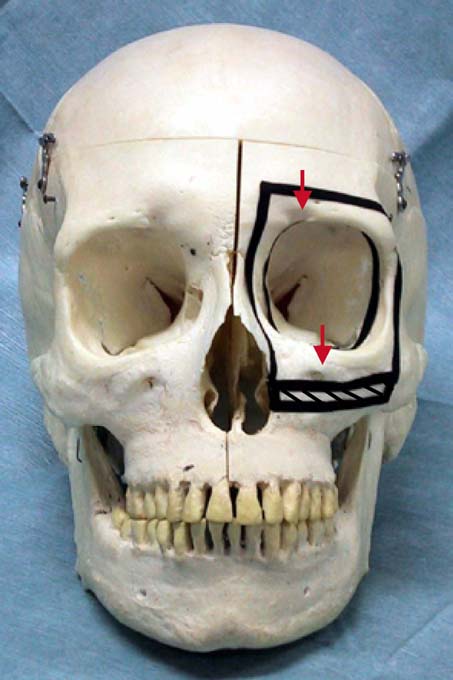Wednesday, October 29, 2003
3330
P60: Our Method of Correcting Vertical Orbital Dystopia
We report our method of orbital osteotomy-mobilization for vertical orbital dystopia caused by plagiocephaly. In this procedure a bicoronal cranial incision and an inferior orbital marginal incision were made. A segment of bone is removed from the zygomatic bone and the osteotomized orbital segment is translocated inferiorly.
Case report Case 1 A 16-year-old male had orbital dystopia caused by left plagiocephaly accompanied by Apert's syndrome. His right visual acuity was low, but he did not have diplopea. Cranioplasty and Le Fort III osteotomy were performed at another hospital. He came to our hospital with orbital dystopia as his chief complaint. His left medial canthus was 6 mm higher than the right one. Left Orbital osteotomy was performed using this method. The medial, inferior and lateral margin of the left orbit was osteotomized in a U-shape mass. A 6-mm wide segment of bone was removed from the zygomatic bone and the osteotomized orbital segment was translocated inferiorly. A bone was grafted in the superior gap that was caused by lowering the left orbit. A natural contour was obtained. Case 2 A 42-year-old female had orbital dystopia caused by right plagiocephaly. Her right visual acuity was low, but she did not have diplopea. When she was 39 years old, left orbital osteotomy was performed in other hospital. Her right canthus was 4 mm higher than the left one and it was accompanied by hypertelorism. Craniotomy and orbital osteotomy were performed. The right circumferential orbit was osteotomized and the left superior and medial margin of the left orbit was osteotomized in an L-shape. The right osteotomized orbit was translocated 7 mm medially and 4mm inferiorly, while the left was moved 7 mm medially. The result obtained was satisfactory.
In conclusion, this method is useful to treat vertical orbital dystopia caused by plagiocephaly. The main advantage of this method is that supra and infra-orbital nerves are preserved.
The solid models that were used as models for the surgery using this method will be able to be displayed by attaching then to the poster stand.
View Synopsis (.doc format, 363.0 kb)
See more of Posters
Back to Plastic Surgery 2003 Complete Scientific Program
Back to Plastic Surgery 2003 Meeting home

